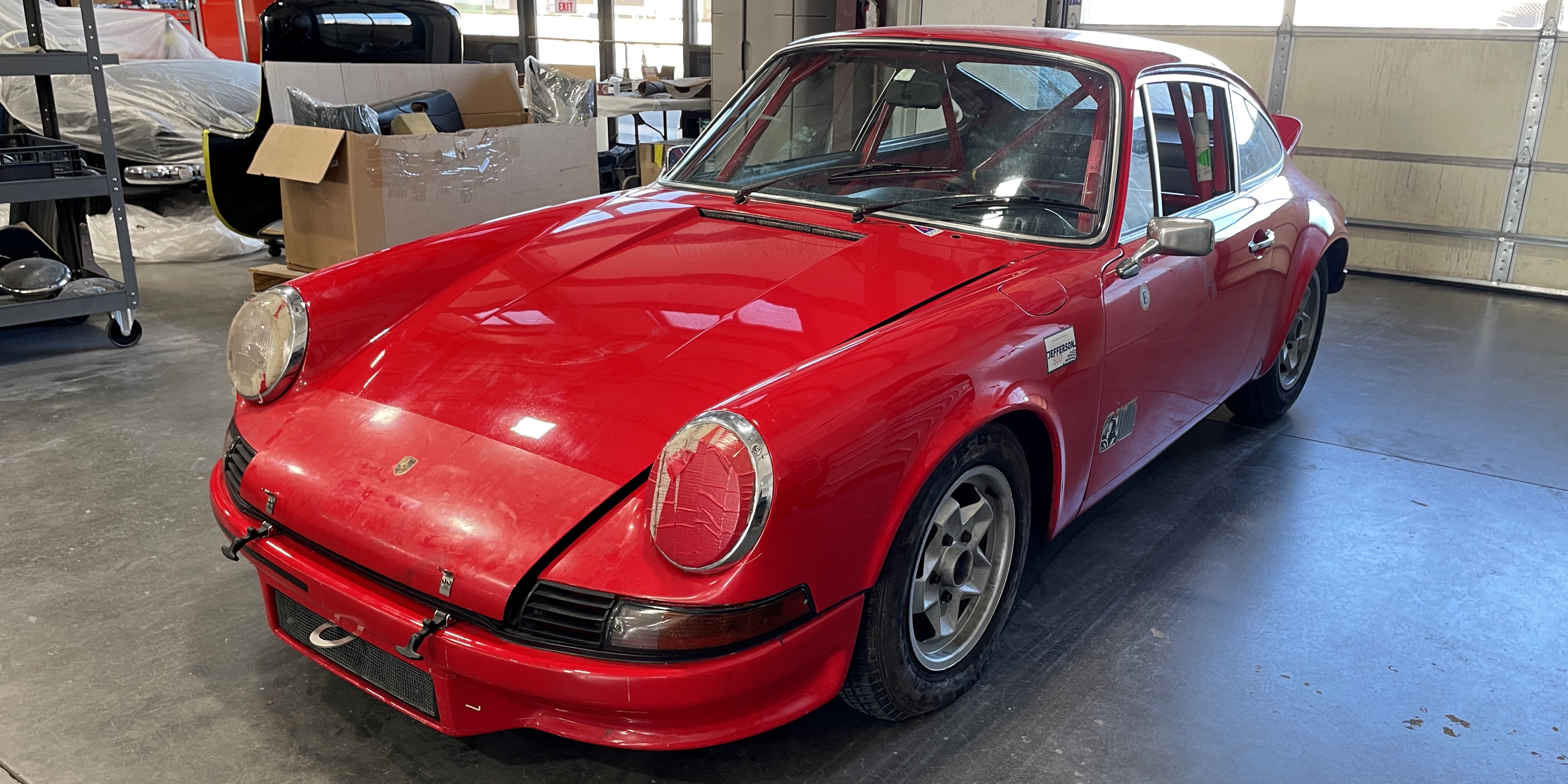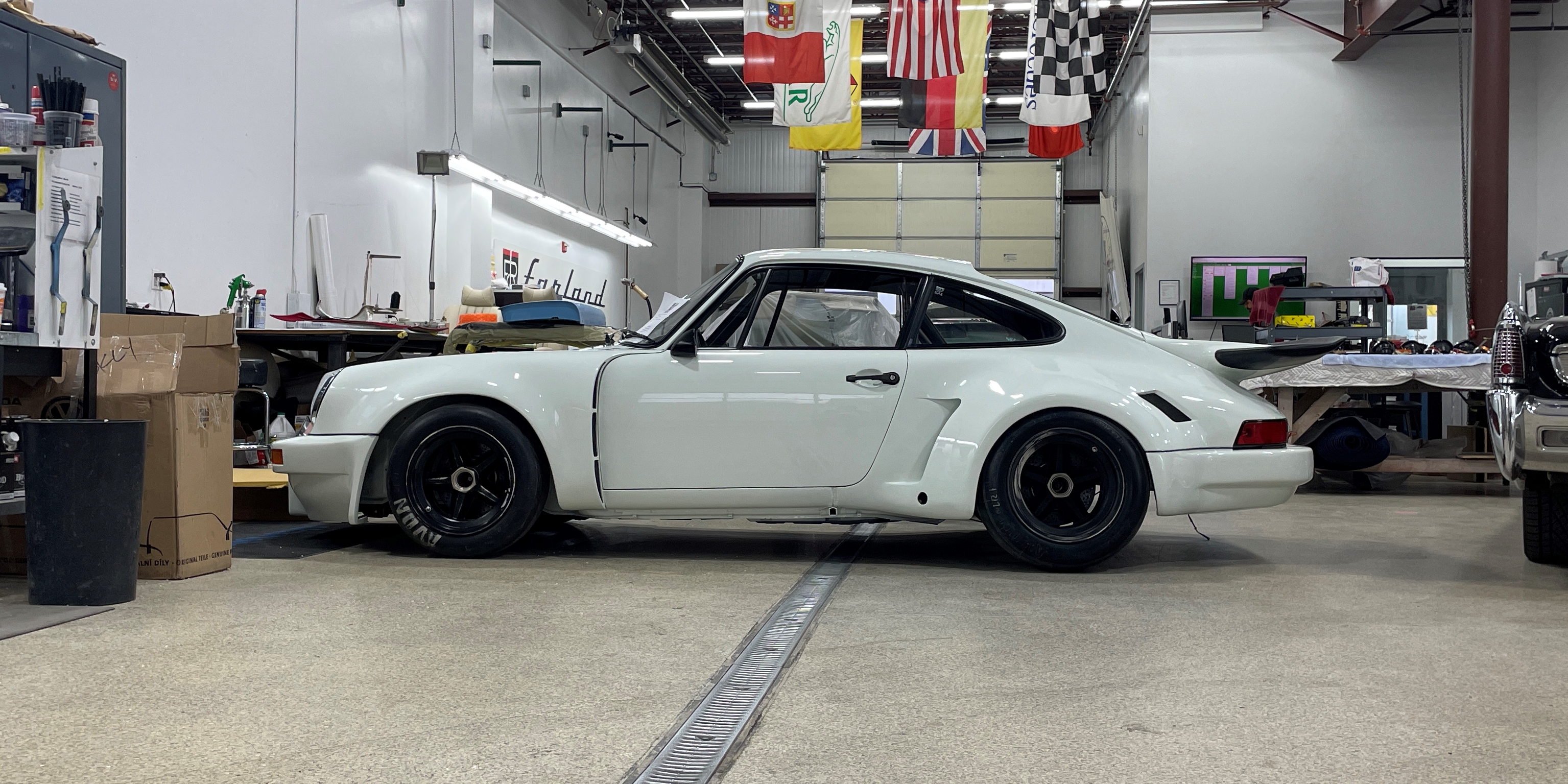Air-Cooled Racing Pedigree
We always love the chance to highlight our mastery of all things classic, but sometimes we're just enjoying the air-cooled. Today, we'll highlight a few air-cooled classics stopping by our shop as part of some extensive restorations on their way to being track-ready Stuttgart rarities! Join us as we cover the Air-cooled Racing Pedigree!
Of course, you're well aware we've been working on the Electric Porsche 912 and the 1959 Porsche 356 Convertible D Restoration here at the shop, but today we figured we'd dig into three recent air-cooled classics that stopped by the shop on their way back out to the track. To get racing, we'll start with the 1973 Porsche 911 RS Tribute Racecar. This classic was originally used as a racecar throughout the 80s at a shop called Troysport Performance down in Florida. By the early 90s the car lived in boxes and sat in the back of their shop before the current owner purchased the car and proceeded to get the car back to racing condition, running in many racing events including the Rennsport Reunion III.

This Porsche represents the racing mentality of the Porsche brand as they moved into the 1970s and would continually develop the cars both for road and track use. As the brand continued to develop their air-cooled design they would continually increase displacement throughout the decade, which leads us into one of the rarest 911 examples to ever come in to the shop, the 1975 Porsche 911 3.0 RSR. 
Taking the next step from the 2.7 RS models, the brand would continue to bore out the 911's flat-six to create more power for the updated FIA-Group 5 rules. In 1974, the brand had begun to develop the next step in engine architecture with the introduction of the turbo. Within two or three years, the entire racing division had moved away from the naturally aspirated racing cars, but still offered a factory NA racecar to privateer racing teams.

This 1975 3.0 RSR is exactly that, the "Top Dog" of the naturally aspirated Porsche racing cars, utilizing center-lock wheels from the 917 and the legendary widened rear-end. This example is one of just 52 examples built from the factory, over the years many tribute cars have been built with similar bodywork, but this one is Factory original.
While it was in, we did some extensive paint cleanup as it gets ready to be matched back up to the legendary 3.0L producing 330bhp originally. While the RSRs were dominating on track, the brand would also use the new turbo design to create one of their most acclaimed variants to the 911. The Slantnose, also called the flachbau, or M505, depending who you ask.1.jpg?width=4032&name=IMG_0825%20(1)1.jpg) Rounding out the air-cooled rarities recently in the shop is the Porsche 930 Turbo Slantnose. the Slantnose design was actually taken from the 935 racing cars which were first introduced in 1976. With the success of the 935 and turbocharging, coupled with the growth of Porsche's internal ''Special Wishes' program, soon street cars were sporting the racecar style headlights.
Rounding out the air-cooled rarities recently in the shop is the Porsche 930 Turbo Slantnose. the Slantnose design was actually taken from the 935 racing cars which were first introduced in 1976. With the success of the 935 and turbocharging, coupled with the growth of Porsche's internal ''Special Wishes' program, soon street cars were sporting the racecar style headlights.
By the early 80s Porsche was building factory cars with the 935 pop-up headlights for internal team members and respected collectors, like the 'Special Wishes' Slantnose we checked out at the Colorado Concours last year. By the later 80s, Porsche wanted-in on the Slantnose style and began offering the design as an option. The M506 (M505 in the US) option code was a 40% price bump from the 911 Turbo model and with the short two-year production, just 600 cars were produced with the Slantnose styling. This 1989 model in the showroom is a very clean example with just 36,000 original miles.
We always love to share a bit of history, especially when we see three iconic air-cooled classics like these. If you'd like to learn more about any of these cars or any of the metal moving through the shop and showroom, please send an email to info@farlandcars.com or if you have a classic needing a bit of attention give us a call at 303-761-1245.
Thanks for stopping by! If you still haven't had your fill of fun, check out the recent shop walk down below.
